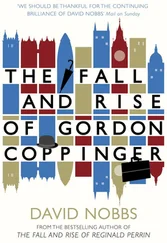Arnold told Marr: “[G]o ahead and scramble the airplanes.”
UNDER THE HIJACKERS’ command, American Flight 11 adjusted its route again, turning more directly to the south. The plane slowed and began a sharp but controlled descent, dropping at a rate of 3,200 feet per minute.
With its transponder switched off, Flight 11 remained largely a mystery to air traffic controllers. If they could see it at all, it appeared as little more than a green blip on their screens. Trying to determine its speed and altitude, they sought help from other pilots. When Flight 11 turned to the south and began to descend, a controller from Boston Center named John Hartling called a nearby plane that had taken off from Boston minutes after Flight 11 and was headed in the same general direction. That plane was United Airlines Flight 175.
Hartling asked the United 175 pilots if they could see American Flight 11 through their cockpit windshield.
At first the sky looked empty, so Hartling asked again.
“Okay, United 175, do you have him at your twelve o’clock now, and five, ten miles [ahead]?”
“Affirmative,” answered Captain Victor Saracini. “We have him, uh, he looks, ah, about twenty, uh, yeah, about twenty-nine, twenty-eight thousand [feet].”
Hartling instructed United 175 to turn right: “I want to keep you away from this traffic.”
Saracini and his first officer, Michael Horrocks, banked the plane to the right, as told. They didn’t ask why, and Hartling didn’t tell them.
As far as anyone knew, the only action needed to keep United Flight 175 and every other plane safe would be separation—that is, steering them away from hijacked American Flight 11. No one had yet deciphered the first sentence of the hijackers’ first radio transmission from Flight 11: “We have some planes.” No one imagined that more than one flight might soon be in danger.
The concept of more than one hijacking simultaneously and in coordination wasn’t on anyone’s radar, literally or figuratively. Years had passed since the last hijacking of a U.S. air carrier, and coordinated multiple hijackings had never happened in the United States. Almost no one in the FAA, the airlines, or the military had dealt with such a scenario or considered it a likely threat. The last organized multiple hijackings anywhere in the world had occurred more than three decades earlier, in September 1970, when Palestinian militants demanding the release of prisoners in Israel seized five passenger jets bound from European cities to New York and London. They diverted three planes to a Jordanian desert and one to Cairo. The crew and passengers of the fifth jet, from the Israeli airline El Al, subdued the hijackers, killing one, and regained control of their plane. No passengers or crew members aboard those hijacked planes died.
AS FLIGHT 11 bore down on New York City, flight attendants Betty Ong and Amy Sweeney sat side by side in the back of the plane. During separate, overlapping calls, they provided a chilling account of the crisis around them. The calls alone were acts of extraordinary bravery. Flight attendants were trained to anticipate that hijackers might have “sleeper” comrades embedded among the passengers, waiting to attack anyone who posed a threat or disobeyed commands.
Just as the military operated under certain expectations about how hijackings played out, aircrews were taught that they should refrain from trying to negotiate with or overpower hijackers, to avoid making things worse. Under a program known as the Common Strategy, crews were told to focus on attempts to “resolve hijackings peacefully” and to get the plane and its passengers on the ground safely. The counterstrategy to a hijacking also called for delays, and if that didn’t work, cooperation and accommodation when necessary. In these scenarios, “suicide wasn’t in the game plan,” as one study phrased it. Neither was a hijacker piloting the plane. Further, no one considered the possibility that a hijacked airplane would attempt to disappear from radar by someone in the cockpit turning off a transponder.
Still operating under the old set of beliefs, some air traffic controllers predicted that Flight 11 would land at John F. Kennedy International Airport in Queens, New York, although at least one put his money on the plane making a run for Cuba. But the old playbook on hijackings had become dangerously obsolete. That was clear as soon as Betty Ong and Amy Sweeney revealed details of a precise, multilayered plot aboard Flight 11.
AFTER THE LAST routine contact between pilots John Ogonowski and Tom McGuinness and Boston Center’s Peter Zalewski at 8:13 a.m., Atta and his men pounced. Based on the timing, about fifteen minutes into the flight, they might have used a predetermined signal: when the pilots turned off the Fasten Seatbelt signs.
One or more of the hijackers, possibly the brothers Wail and Waleed al-Shehri, who were sitting in the first row of first class, sprayed Mace or pepper spray to create confusion and force passengers and flight attendants away from the cockpit door.
Using weapons smuggled aboard, perhaps the short-bladed knives bought in the months before September 11, they stabbed or slashed first-class flight attendants Karen Martin and Bobbi Arestegui. Amy Sweeney told Michael Woodward in Boston that Karen was critically injured and being given oxygen. Betty Ong told Nydia Gonzalez in Fort Worth that Karen was down on the floor in bad shape. Both said Bobbi Arestegui was hurt but not as seriously as Karen. They didn’t say what kind of knives or weapons the hijackers used. Neither indicated that the terrorists had guns or other weapons.
All nine flight attendants had keys to the cockpit, but it’s not clear how the hijackers gained entry—Atta and his crew might have attacked Karen and Bobbi to steal their keys, or the hijackers might have gotten into the cockpit another way. When the plane dipped and pitched erratically, Betty suspected that a hijacker was already in control. She said she thought they had “jammed the way up there.” In fact, the cockpit doors were relatively flimsy and weren’t strong enough to prevent forced entry. Another possibility was that the hijackers stabbed the first-class flight attendants to induce the pilots to open the cockpit door. Or maybe it was even simpler: In September 2001, one key opened the cockpit doors of all Boeing planes. Maybe the hijackers brought a key on board with them.
Whichever way Atta and the others gained access, no one who knew John Ogonowski, the Vietnam veteran who farmed when he wasn’t flying, or Tom McGuinness, the former Navy pilot, would believe that either went down quietly. Possible evidence of that came during Betty Ong’s call. She said she heard loud arguing after the hijackers entered the cockpit. If Ogonowski and McGuinness were in their seats, low and strapped in, they would have been at a distinct disadvantage against knife-wielding attackers coming at them from behind with the element of surprise.
As the only hijacker with pilot training, Mohamed Atta almost certainly took control of the plane after the hijackers killed or disabled the pilots. He spoke English fluently, so he likely made the radio transmissions heard by Peter Zalewski in Boston Center. It’s also possible that Atta’s seatmate, Abdulaziz al-Omari, accompanied him into the cockpit.
Betty Ong reported to Nydia Gonzalez that a passenger’s throat had been slashed and that the man appeared to be dead. On her call to Michael Woodward, Amy Sweeney said the passenger was in first class. Betty told Nydia Gonzalez the passenger’s name was “Levin or Lewis” and that he’d been seated in business class seat 9B. In her first, brief call, Amy identified the attacker as the passenger who’d been seated in 10B.
Nydia Gonzalez tried to confirm the killer’s identity. She asked Betty: “Okay, you said Tom Sukani?”—a name phonetically similar to that of “muscle” hijacker Satam al-Suqami. “Okay—okay, and he was in 10B. Okay, okay, so he’s one of the persons that are in the cockpit. And as far as weapons, all they have are just knives?”
Читать дальше












